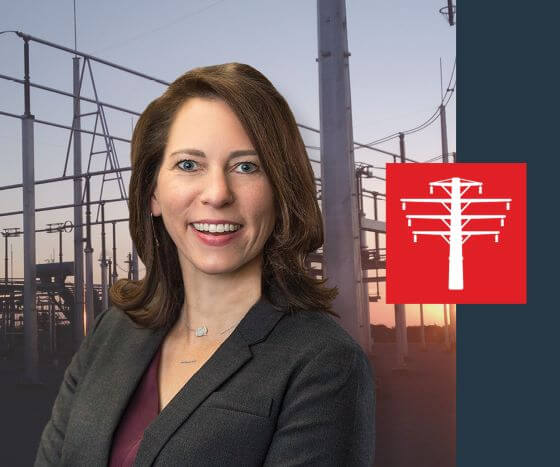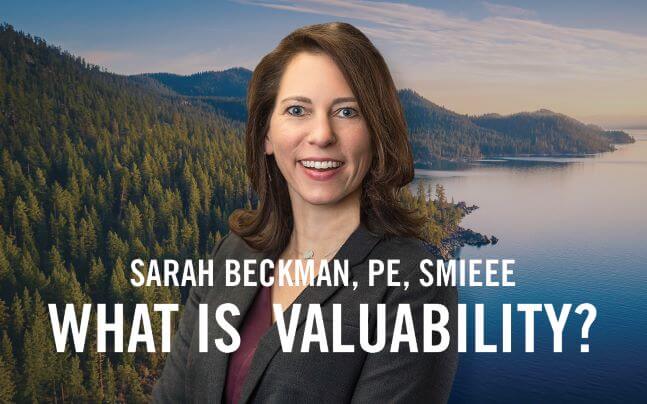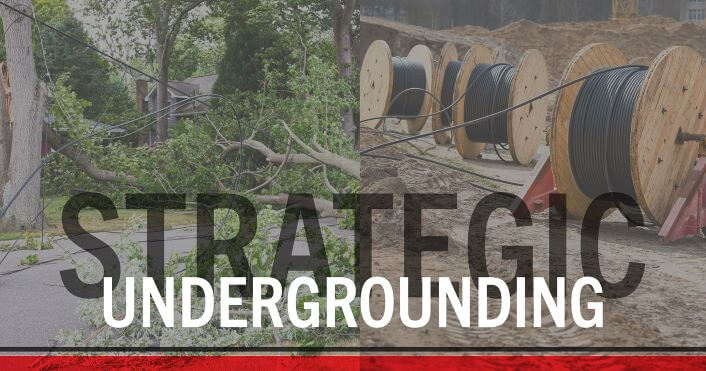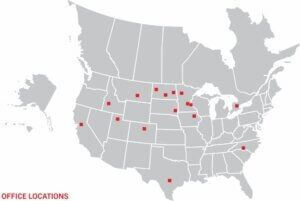Discussing Decentralized Grid Technologies with Sarah Beckman
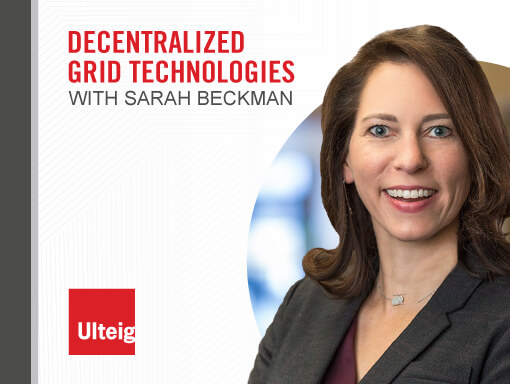
March 16, 2023
Sarah Beckman, Ulteig’s Vice President of Power, highlights the importance of grid resilience, sustainability and more in her following Q&A.
With recent statewide grid failures, there have been increased conversations in grid decentralization. Homeowners have added technologies like solar and wind power, but have you seen local municipalities and regions adopt similar technologies for their constituents?
“Yes – California built its reputation over the last 20 years for adopting wind and solar; along with policies (which lays out incentives and rebates) driving utilities to adopt more renewable generation. With that being said, these projects are subject to the global economy and supply chain constraints – getting solar panels and wind turbines, along with the equipment and materials to integrate that generation onto the grid. It’s time to rethink how we design infrastructure. It must be grounded in both current needs and future opportunities, serving as a lifeline between where we are today and where we need to be tomorrow.”
“Certainly, homeowners adopting distributed energy resources like solar or storage is necessary to help address the recent grid failures, and we need a holistic approach. Many of the local municipalities and utilities have net zero or zero carbon plans. Some publicly owned utilities are required to adopt an integrated resource plan to meet carbon reduction standards (i.e. install more renewable generation).Beyond simply adopting more wind and solar, utilities are thinking about how they can operate the grid more efficiently, and effectively modernize their grid over the coming 5 to 10 years to plan for a sustainable future for their customers – a grid that everyone can count on. Ulteig helped Redding Electric Utility with a plan that did just that – in addition to the incorporation of more distributed energy resources and two-way power flow, it also addressed replacing aging infrastructure, wildfire risk, regulatory requirements, and service reliability. The transition to energy-efficient and equitable infrastructure solutions won’t happen overnight. It’s a complicated process that requires an understanding of how we operate today and where we can identify the crucial improvements that move us forward.”
Have you seen a discrepancy in rural vs urban grid improvements?
“Rural and urban electric grids require different types of planning and investments – they face different challenges. When looking at the electric grid’s operation as a whole, rural and urban, our first imperative is safety, second is reliability and aging infrastructure comes next. Historically, not-for-profit utilities rural electric cooperatives haven’t been able to fully leverage benefits like the production tax credit. The Inflation Reduction Act of 2022 offers these utilities many options from direct tax credits to grants to spur investment in rural infrastructure.”
“With more DERs coming online, utilities have an opportunity to deploy technology at the distribution level and/or leverage different assets to offsets — and not reinvent the wheel (which looks different in urban versus rural environments). Grid modernization is particularly beneficial in rural environments as it provides a boost to the local economy by creating jobs, it enables the grid to operate more efficiently, and provides an improved level of service to customers. Ulteig’s grid modernization services takes a consultative approach to meet utilities where they are and identify growth plans — using both innovative and decision matrix tools.”
What responsibilities do energy providers have in the long-term resiliency of the grid?
“Fundamentally, energy providers must hold themselves accountable to providing safe, reliable and affordable electricity. We are facing the largest transformation of the electric grid since it was built with increasing adoption of inverter-based generation/more DERs/storage, two-way power flow on the distribution system, more frequent, extreme weather events, the ‘electrify everything’ movement and adoption of new technologies. It’s a very complex transition, and grid modernization plays a key in reliability, and in the long-term, grid resilience. To achieve this grid transformation, there are many stakeholders and differing perspectives that must be balanced.”
“All of us play an important role in the future of our energy systems – that goes for energy providers, client partners representing major industries and leading organizations across the nation, from municipalities to public utilities to construction companies to government agencies. The greatest ideas and progress are forged through collaboration. When we bring together industry partners, influencers and leading minds, we can better understand the opportunities to rethink how infrastructure can serve current and future needs. A better future begins with solutions that emphasize connection, innovation and stewardship as we solve the issues of today and work to build a better future. We believe that the best solutions are ones that create connections with our clients, employee-owners and communities, foster innovation, technological advancements and help us serve as stewards for our world.”
Continue learning more about Ulteig’s Power Lifeline Sector.
WHAT MAKES ULTEIG DIFFERENT?
From global energy producers to locally funded cities and private developers to government agencies, the clients we serve encompass a broad range of relationships and projects. Find out why Ulteig is a leader in the engineering industry.
Contact Us
